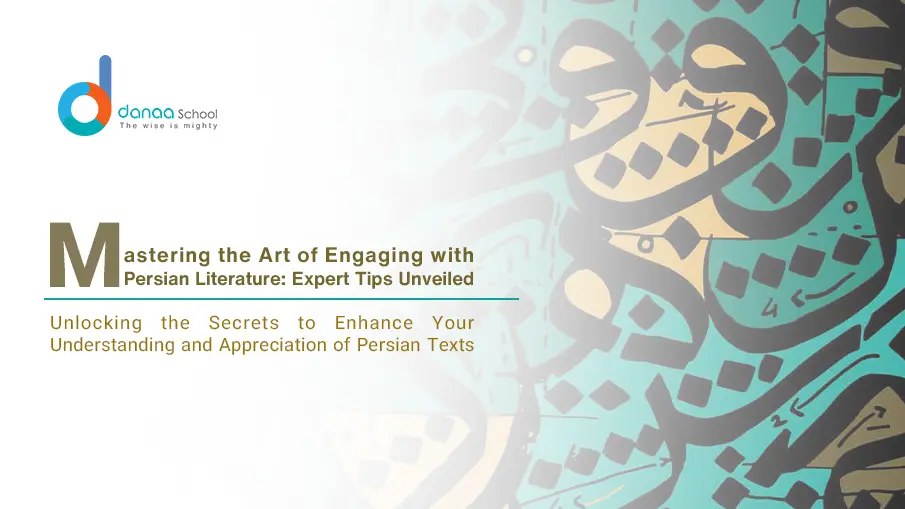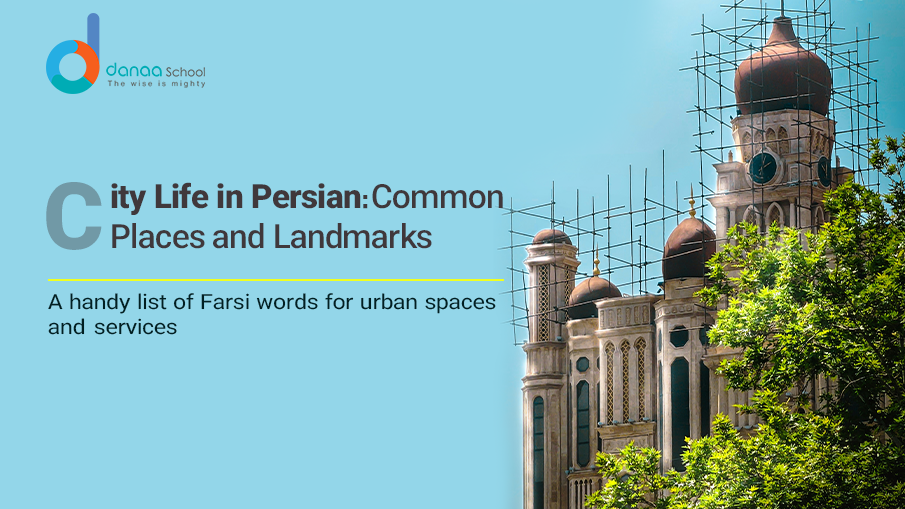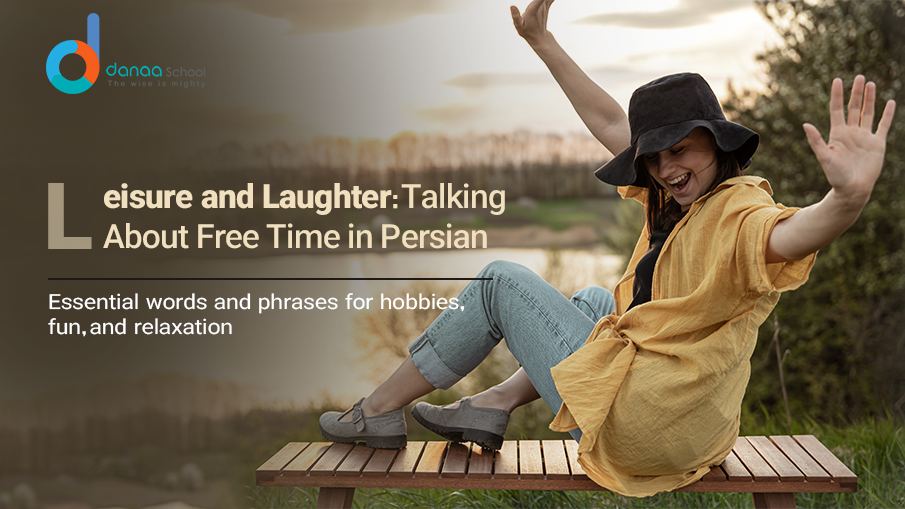Important Tips for Reading Persian
With its intricate tapestry of history, culture, and language, Persian literature beckons readers to peer into the soul of a vibrant civilization. Whether you find solace in the verses of Rumi’s poetry or lose yourself in the epic tales of Ferdowsi’s Shahnameh, the journey through the world of Persian literature promises to be a rewarding one.
This guide is your key to unlocking the treasures of reading Persian literature, offering tips to enhance your understanding and appreciation of these literary gems.
1. Introduction to Reading Persian Literature
Welcome to an exploration of the captivating world of Persian literature. Spanning centuries and encompassing diverse genres, Persian literature is a testament to the Persian-speaking world’s rich cultural heritage and literary prowess.
From the mystical verses of Rumi’s ‘Masnavi’ to the epic tales of Ferdowsi’s ‘Shahnameh ‘, Persian literature offers a tapestry of narratives, poetry, and wisdom that has captivated readers across generations.
Brief History and Significance
Persian literature boasts a legacy over millennia, dating back to ancient civilizations such as the Achaemenid Empire, a powerful Persian dynasty that ruled from the 6th to 4th centuries BCE. Over the centuries, it has evolved through various dynasties, including the Islamic Golden Age, a period of cultural, economic, and scientific flourishing in the history of Islam, leaving an indelible mark on world literature.
This rich heritage encompasses diverse genres, including poetry, prose, and philosophical treatises, reflecting the multifaceted nature of Persian culture.
2. Understanding the Nuances of Persian Literature
Themes and Motifs
Persian literature, despite its distinct cultural lens, often explores universal themes such as love, loss, and redemption. By exploring the intricacies of Persian symbolism and allegory, you can unravel deeper layers of meaning that resonate with the human experience.
For instance, the motif of the beloved in Persian poetry symbolizes romantic love and the yearning for divine union and spiritual transcendence, offering profound insights into the human condition that are universally relatable.
Cultural Context
To truly appreciate Persian literature, it’s essential to grasp the historical and cultural backdrop against which these works were created. Explore the socio-political dynamics and philosophical currents that shaped the literary landscape of Persia.
From the mystical Sufi tradition, a mystical Islamic belief and practice in which Muslims seek to find the truth of divine love and knowledge through the direct personal experience of God, to the courtly etiquette of the Persian royal courts, a refined and elaborate system of social behavior, understanding these contextual nuances enhance your interpretation and appreciation of Persian literary masterpieces.
3. Tips for Approaching Persian Literature
Where to Start with Persian Literature?
Begin your journey with seminal works by celebrated Persian poets and writers. Discover the timeless verses of Hafez, Saadi, and Omar Khayyam to acquaint yourself with the essence of Persian literary tradition. These poets offer a gateway to the poetic heritage of Persia, with their evocative imagery, profound wisdom, and lyrical beauty captivating readers across centuries and cultures.
How Do You Read Persian?
Familiarize yourself with the Persian script, a modified version of the Arabic script, and its unique features such as the presence of additional letters and different letter forms, to facilitate reading original texts. Start with beginner-level materials and gradually progress to more advanced literature as your proficiency improves.
Utilize language learning resources, such as textbooks, online courses, and language exchange programs, to hone your reading skills and expand your vocabulary.
Is it Hard to Read Persian?
While Persian may present initial challenges for non-native speakers, rest assured that with dedication and practice, it becomes increasingly accessible. Although different from the Latin script, the Persian alphabet is phonetic and relatively straightforward. Moreover, modern technology provides a wealth of resources, such as language learning apps and online dictionaries, to support your language acquisition journey.
How Can I Get Better at Persian?
Immerse yourself in Persian culture by listening to Persian music, watching films, and engaging with native speakers—practice reading, writing, speaking, and listening regularly to reinforce your language skills. Join language exchange groups or attend language meetups to interact with fellow learners and native speakers, gaining valuable insights and practical experience.
4. Techniques for Effective Reading
What is the Masterpiece of Persian Literature?
Ferdowsi’s ‘Shahnameh ‘, also known as the ‘Book of Kings,’ is considered the masterpiece of Persian literature. This epic poem, a long narrative poem that typically tells of heroic deeds and adventures, chronicles Iran’s mythical and historical past and embodies the essence of Persian identity and heritage.
With its vivid storytelling, rich imagery, and moral complexity, Shahnameh continues to captivate readers of all ages, transcending cultural and linguistic boundaries.
What Are the Hardest Parts of Learning Persian?
Mastering Persian grammar and syntax, particularly the complex verb conjugations and sentence structures, can challenge learners. Consistent practice and exposure to authentic Persian texts are key to overcoming these hurdles.
Additionally, immersing yourself in Persian-speaking environments through travel or virtual interactions accelerates language acquisition and enhances fluency.
What Are the Two Famous Works of Persian Literature?
Apart from ‘Shahnameh ‘, Rumi’s ‘Masnavi’ stands as one of the most renowned works of Persian literature. This spiritual masterpiece, often described as mystical, explores themes of love, mysticism, and human existence, captivating readers with its profound insights and poetic beauty.
Attar’s ‘The Conference of the Birds’ is another iconic work. This allegorical masterpiece, a narrative in which characters and events represent abstract ideas and moral qualities, explores the soul’s journey toward divine truth, resonating with seekers of wisdom and enlightenment throughout the ages.
What Makes Persian Literature Unique?
Persian literature’s synthesis of diverse cultural influences, including Arabic, Turkic, and Indian traditions, imbues it with a distinctive flavor. Its lyrical poetry, rich symbolism, and philosophical depth reflect the multifaceted nature of Persian civilization.
Whether exploring the mystical realms of Sufi poetry or the historical epics of Persian kings, readers encounter a rich tapestry of human experience and existential inquiry woven into the fabric of Persian literary tradition.
What Is the Most Famous Persian Story?
One of the most famous Persian stories is “The Conference of the Birds” by Attar. It is a mystical allegory that explores the journey of self-discovery and spiritual enlightenment. Its timeless wisdom continues to resonate with readers worldwide, transcending cultural and religious boundaries.
Through its symbolic narrative and profound symbolism, “The Conference of the Birds” reflects on the human quest for meaning and transcendence, inspiring readers to start their spiritual odyssey.
Should I Learn Persian or Arabic First?
The choice between learning Persian or Arabic depends on your interests, goals, and cultural affinity. While Arabic is the language of the Quran and holds significance in Islamic scholarship, Persian offers access to a rich literary tradition spanning poetry, prose, and philosophy.
Consider your long-term objectives and personal preferences when deciding which language to prioritize. Both Arabic and Persian open doors to diverse cultural landscapes and intellectual traditions.
Conclusion
As you start your journey through the enchanting realms of Persian literature, remember that each page holds a treasure trove of wisdom, beauty, and insight waiting to be discovered. By employing these tips and techniques, you’ll enrich your reading experience and forge a deeper connection with the timeless legacy of Persian literary heritage.
Nurture your language skills with Danaa School’s fantastic Farsi program! Our engaging curriculum is tailored for young learners, making Farsi learning enjoyable and effective. With fun activities and experienced teachers, we create a supportive environment. Join us!
Why Danaa School?
Danaa School is committed to preserving and promoting the rich cultural heritage of Persian literature. With a curriculum designed to inspire and educate, Danaa School allows students to explore the world of the Persian poetry and discover the profound wisdom and beauty contained within.
Through engaging lessons, interactive activities, and immersive experiences, Danaa School students learn about the legendary Persian poets and develop a deeper appreciation for the cultural heritage that continues to shape their identity and worldview.
FAQs
1. Is prior knowledge of the Persian language necessary to appreciate Persian literature?
– While knowledge of Persian can certainly enhance your understanding, many translations and resources are available for non-Persian speakers to enjoy Persian literature. By immersing yourself in translations and cultural context, you can still glean profound insights from Persian literary works.
2. How can I distinguish between different periods and styles in Persian literature?
– Explore literary histories and scholarly works that offer insights into the evolution of Persian literature over time. By studying the socio-political context, thematic motifs, and linguistic features of various periods, you can discern the unique characteristics of each era and style within Persian literature.
3. Are there any contemporary Persian authors worth exploring?
– Absolutely! Explore the works of modern Persian authors such as Shahrnush Parsipur, Mahmoud Dowlatabadi, and Marjane Satrapi for a glimpse into the contemporary Persian literary landscape. These authors tackle contemporary issues, social dynamics, and cultural phenomena, providing fresh perspectives on the evolving landscape of Persian literature.
4. What are some recommended introductory texts for beginners interested in Persian literature?
– Start with translations of classic works such as “The Conference of the Birds” by Attar, “The Rubaiyat of Omar Khayyam,” and “The Divan” by Hafez. These introductory texts offer a glimpse into Persian literature’s diverse genres, themes, and styles, laying the foundation for further exploration and study.
5. Where to start with Persian literature?
Starting with classical Persian literature can provide a rich foundation. Begin with renowned poets like Rumi, Hafez, and Ferdowsi. You can also explore modern Persian authors such as Sadegh Hedayat and Forough Farrokhzad for a contemporary perspective.
6. How do you read Persian?
Learning the Persian alphabet and its pronunciation is key. Start with basic texts and gradually advance to more complex ones. Utilize resources like language textbooks, online tutorials, and language exchange programs to practice reading and comprehension.
7. **Is it hard to read Persian?**
Like any language, Persian presents its challenges, especially for those unfamiliar with non-Latin scripts. However, with dedication and consistent practice, reading Persian becomes manageable. Start with simple texts and gradually progress to more challenging material to build proficiency.









